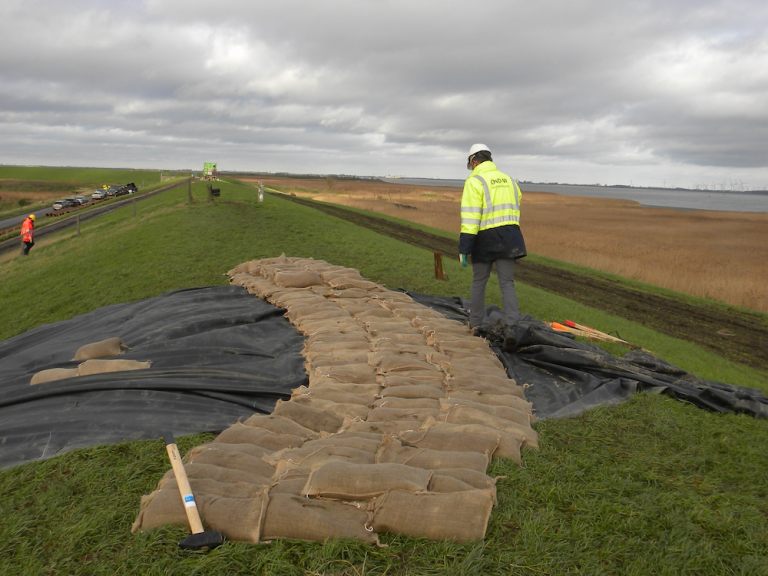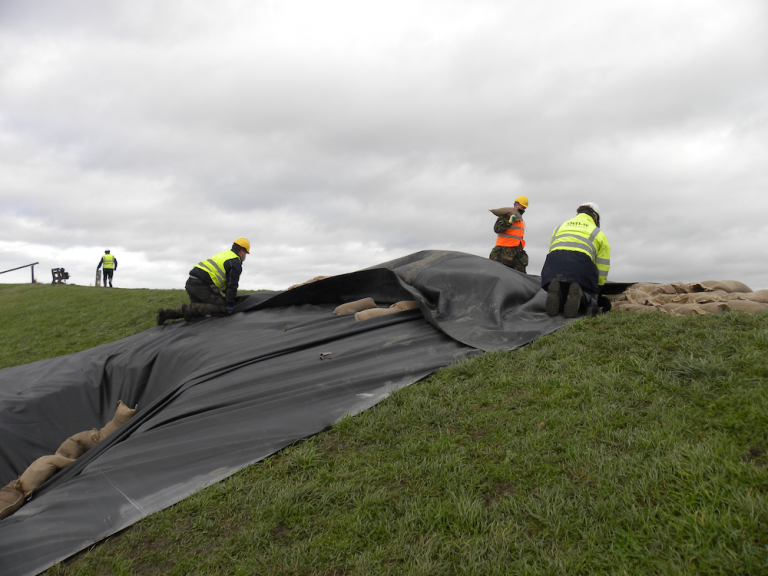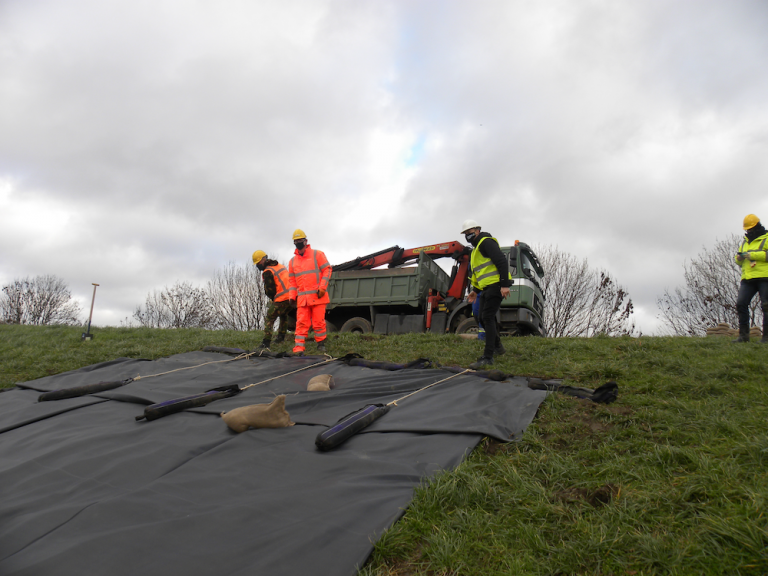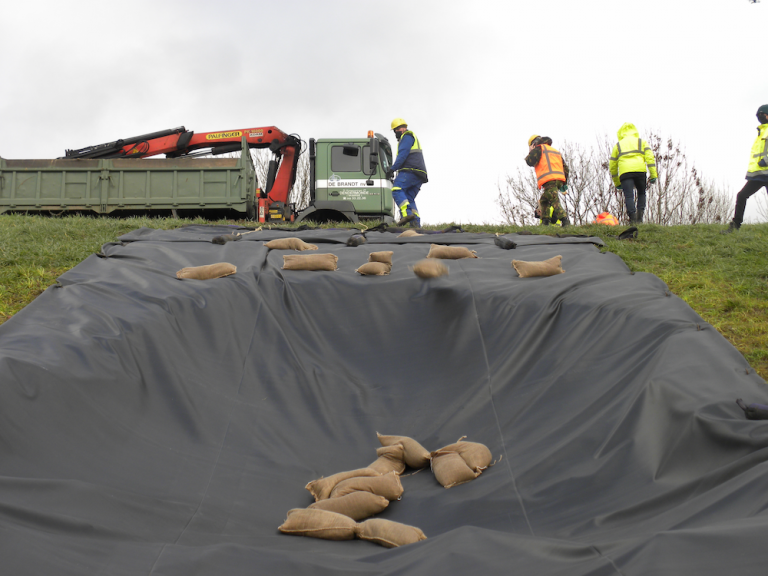Repairing damaged levee with sandbags and foil tested
- 18 December 2020
- Francien Horrevorts
- Emergency Response
On Monday the 14th of December our emergency response team headed to the Hedwige-Prosperpolder for some hard physical labour. During the recent overflow tests, some parts of the levee were damaged. The task awaiting our team was repairing these damages.
The damages on the levee offer a great opportunity for the team to test several repairing techniques. The emergency response team selected several repairing techniques to test in our Living Lab. These are sandbags in combination with foil, kyowa bags and a permanent repair using clay. Sandbags combined with foil was the first technique to test mid-December. The two other techniques will be tried at a later stage, in the first months of 2021.
Exercise simulation
For this case study it was simulated that the levee had erosion damage due to overtopping water. This must be repaired within a short timeframe before the next high water occurs. Therefore, a temporary solution should be put in place.
Damages to be repaired
The two damages that had to be repaired were more or less of a similar size, two pits or scour holes of 2 x 10 meter and 1 to 2 meter deep. One damage was on the Dutch side of the levee and the other on the Belgian side. The damage on the Dutch side of the polder was near the crest of the levee and accessible by a road on the toe of the levee. The damage on the Belgium side was near the toe of the levee and accessible from the road on the crest.
Materials and innovative methods
For both damages the same material has been used, sandbags, steel pins and a foil of EPDM, which is also used for example for building ponds. EPDM foil was chosen as it was the best way to simulate clay to prevent water from entering the core of the levee. Whereas the material used was similar, the methods used to place and anchor the foil differed. Both methods were innovative in their own way.
- For the Dutch damage on the top of the levee, the team had chosen to make an embankment of sandbags on top of the levee in order to prevent overtopping water from running over the foil.
- For the Belgian damage near the toe of the levee, it was chosen to make an incision using an excavator in the grass cover and test how well this holds up.
Dutch damage near the crest
As the road was in the toe of the levee, all materials, over 400 sandbags and 350 kg weight of foil, had to be transported to the top of the levee manually.
What was done:
- On the top of the levee three layers of sandbags were placed on top of the foil in a half circular shape to form a local embankment.
- The foil was wrapped around the sandbags and anchored in the levee with steel pins. As a result, the sandbags become one great mass and are more likely to withstand the force of overflowing water.
- The foil was weighed down by sandbags on all four sides of the foil. This functions as ballast material but also prevents water from flowing underneath the foil.
- The foil was anchored with steel pins to the levee to prevent wind from blowing under the foil. The foil is folded double on the locations of the anchors to make sure it can withstand the tear forces.


Belgian damage near the toe
The road was on the crest of the levee, so gravity helped bringing the foil and the sandbags in place.
What was done:
- The grass cover at the top of the levee was used to weigh down the foil. The cover was lifted using an excavator, foil was placed underneath and the cover was placed back to anchor the foil by its weight. After the foil was completely placed underneath the grass cover, extra pins were placed to secure the anchoring.
- A smaller number of sandbags was used to weigh the middle of the foil at the center of the erosion hole to secure any uplift due to pressure differences.


Learnings
Corona rules do not get in the way of repairing measures, but need attention all the time. Both repairs were solid and successful and can be used as a temporary measure to repair erosion damages on the levee. Repairing the Dutch damage near the top of the levee was labour intensive, as the road was in the toe of the levee and a lot of material was needed. All the material, had to be carried up by a team of people. A well-trained strong team and a team leader who knows exactly how to perform the repairs are essential.
The Belgian damage, accessible from the top of the levee, was quick and just a handful of people was needed. The incision method was easier than expected to implement in the field. For both repairs different reasoning was leading for placing sandbags on the sides of the foil or not. Now, time will show whether both measures are equally strong and weather-resistant.
"It is very interesting to see how both repairs will hold in the coming months. If they are of an equal quality, the second method is much quicker and less labour intensive."
Bart Vonk, team leader Emergency Response
Video report
The repairing techniques and its context have been explained in this video. See the video for a visual report.
